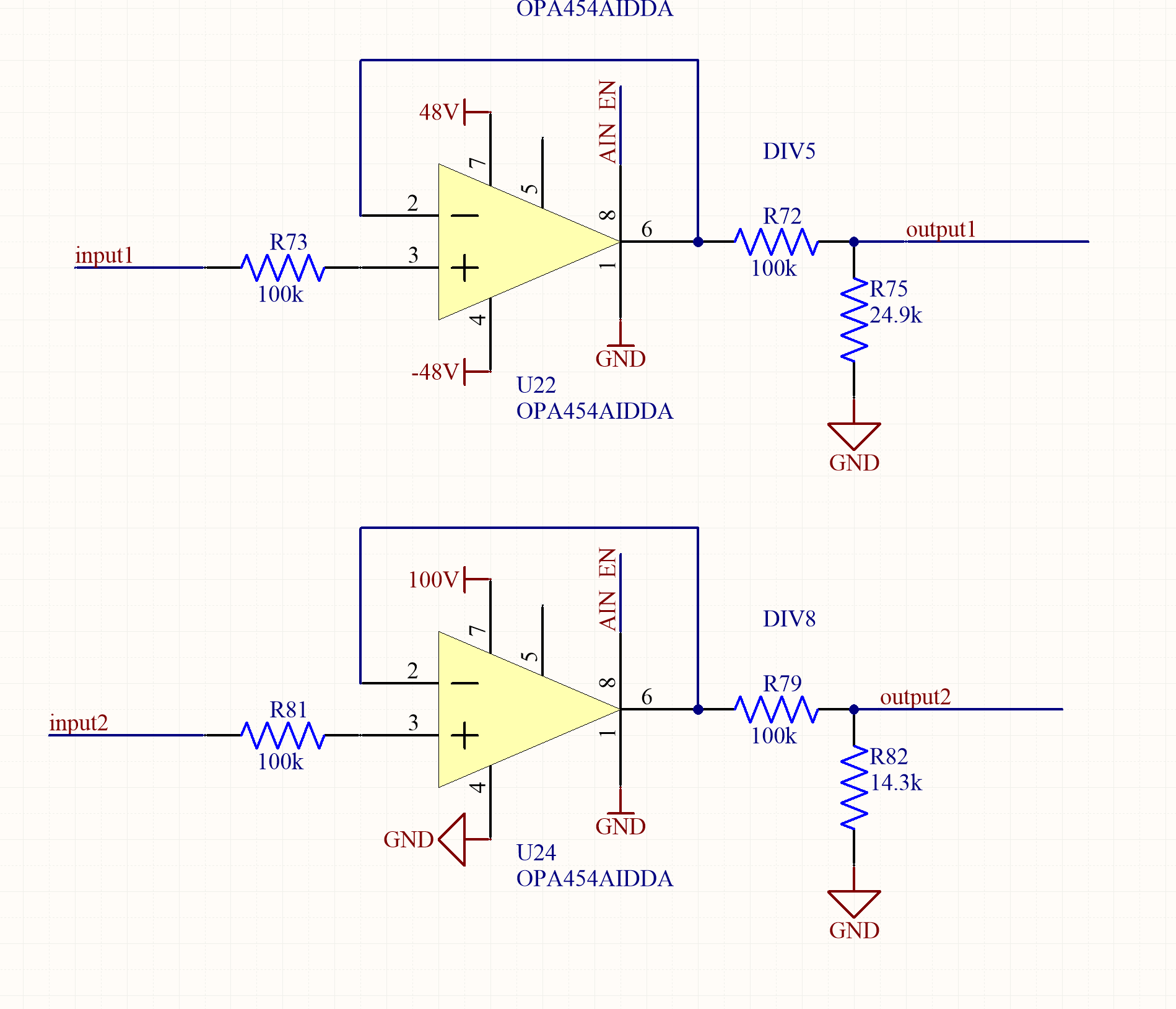I've had several OPA454 parts fail in the same circuit, used to provide a high impedance input to a resistor divider in the position of U24 in the below schematic.
U22 has had no such failures. The difference is that U24 sees a different grounding scheme and input 2 can be up to 70V while input 1 is only 15V.
It is possible in this circuit to have input voltage with no supply voltage present, but there is a large resistor out front and I would think the internal clamping diodes should be able to handle it.
Any thoughts on what could be damaging the parts?


